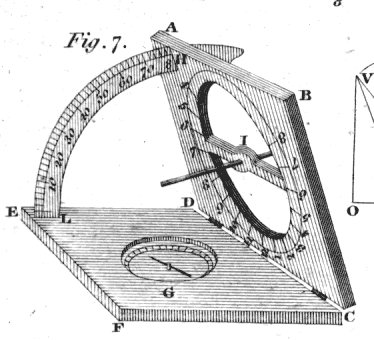Sundials
Today, the sun tells the time -- for 3500 years. The University of Houston's College of Engineering presents this series about the machines that make our civilization run, and the people whose ingenuity created them.
What was the first timepiece? Probably a tree, casting a shifting shadow, long to the west in the morning, short to the north at mid-day. Sundials clearly began as a perfectly obvious fact of nature. Then, as we began asking more of them, they opened into a mire of complexity.
My son, home last week for a visit, brought a computer program he'd written. It predicted sunrise, sunset, and solar position -- for any place, any date, any time. The very intricacy of that program told how hard it is to interpret a tree's shadow as the sun wheels through the passing year. The simpler sundials told us only when it was noon, or they named the summer solstice. Before they could tell us the time of day throughout the year, we'd have to learn far better to read their shifting shadows.
The oldest known sundial was made in Egypt in 1500 BC. It was L-shaped. The top of its vertical leg cast its shadow on the horizontal leg. The shadow's length, not its location, roughly indicated the time. A vast variety of shadow-casting devices followed in the ancient world -- L-shaped, bowl-shaped, step-shaped -- even a light beam cast by a hole in a darkened room. The great ceremonial Egyptian obelisks may've doubled as huge sundial indicators. The Book of Kings tells how Isaiah called on God to make the shadow of an 8th-century BC sundial move backward.
But it took the astronomers and geometers of Hellenistic North Africa to make sundials into reliable instruments and to regularize the telling of time. Hellenistic time-keeping devices appealed to the organized Romans. By the first century BC they'd erected so many in Rome that one angry citizen wrote,
Let the gods damn the first man who invented the hours, ... who set up a sundial in this city! ... He has chopped the day into slices. When I was young, there was no other clock but my belly ... Now we [eat] when it pleases the sun.
Actually the Romans sliced the day up differently than we do. They divided day and night into 12 hours each -- summer and winter alike. Hours had different lengths in light and dark.
Sundials became the common time-tellers of medieval Europe. You find vertical dials on the outer walls of Chartres Cathedral and Cluny Abbey. Complicated water clocks were the high-tech of medieval time-telling, but more for show than tell. The simple clock-like faces of sundials provided all the social regulation anyone really needed in the medieval world.
When I was a Boy Scout, as late as the early '40s, I carried a small flat brass case that held a compass, a sundial, and a table of corrections. The sundial was still there, still alive and active in my own lifetime --after three and a half millennia.
I'm John Lienhard, at the University of Houston, where we're interested in the way inventive minds work.
(Theme music)
Rohr, R.R.J., Sundials: History, Theory, and Practice. Toronto: University of Toronto Press, undated.
Marshall, R.K., Sundials. New York: the MacMillan Company, 1963.
The computer program that I mention above was written by John H. Lienhard V, Mechanical Engineering Department, Massachusetts Institute of Technology, who also provided additional advice.

From the 1832 Edinburgh Encyclopaedia
A 19th-Century Pocket Sundial